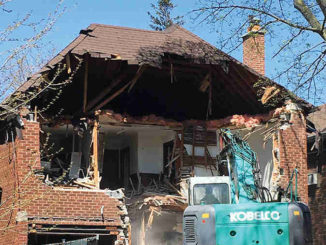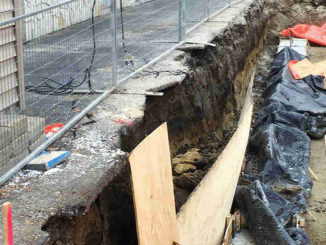Following last month’s “Neighbour, beware – construction next door” article in Leaside Life, I happened to be invited to a meeting along with other resident association representatives to get an update from Toronto Building on the City’s Residential Infill Strategy.
In March 2016, City Council approved a strategy to improve the City’s response to residential construction sites.
While there has been radio silence until now, things have been happening behind the scenes. Here are the key initiatives:
Improving the City’s Complaint-Management Strategy
• Dedicated Enforcement Unit to respond to problematic residential infill sites and co-ordinate with other city divisions.
• Strategic approach to resolve issues in a timelier manner.
Encouraging Good Contractor Behaviour
• Additional Building Inspection – An additional site inspection is being required at the beginning of construction, and when necessary, towards the end of a project to encourage timely completion.
• Increased Use of Tickets – A ticketing pilot was introduced to evaluate if, through the issuance of tickets, builders would comply more quickly when violations are identified.
• Verification of Compliance with Issued Permit – Steps are being taken to strengthen the zoning-related knowledge of building inspectors through additional training. As-built surveys will be required early in the construction process to confirm height and setback requirements, as well as the elevation of first floor.
Improving Communication with Residents
• Dedicated Residential Infill Website – Toronto Building has developed a dedicated residential infill website that allows one to follow the progress of a permit through the review and/or inspection stages.
• Best Practices Guide – Toronto Building will facilitate the development of a Best Practices guide on residential infill construction with key stakeholders.
• Construction Site Notice – Requirement for a Notice to be posted on the infill construction sites, containing key project information so residents will be better informed about the project underway and who to contact with concerns.
The most promising element of the strategy is the dedicated residential infill website both to inform neighbours whether city inspections have been done, and also whether they passed. This truly allows neighbours to be informed but also serves as a publicly accessible audit on the performance of the contractor (and applicant).
Finally, coming to a residential infill construction site near you this summer is new, informative construction site signage. Now we just need to fix the tree protection issues, dust generation, mud tracked onto roads issues, etc.
Contacts/Resources:
Good Neighbour Guide for Residential Infill Construction
www.toronto.ca/services-payments/building-construction/complain-about-construction-issues/residential-infill-construction/good-neighbour-guide-for-residential-infill-construction
Complaints: call 416 397-5330, email
Current status of building permit approvals and inspections:
www.toronto.ca/infill
www.toronto.ca/building




